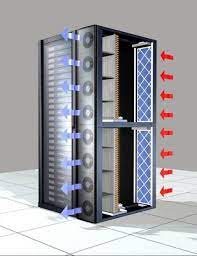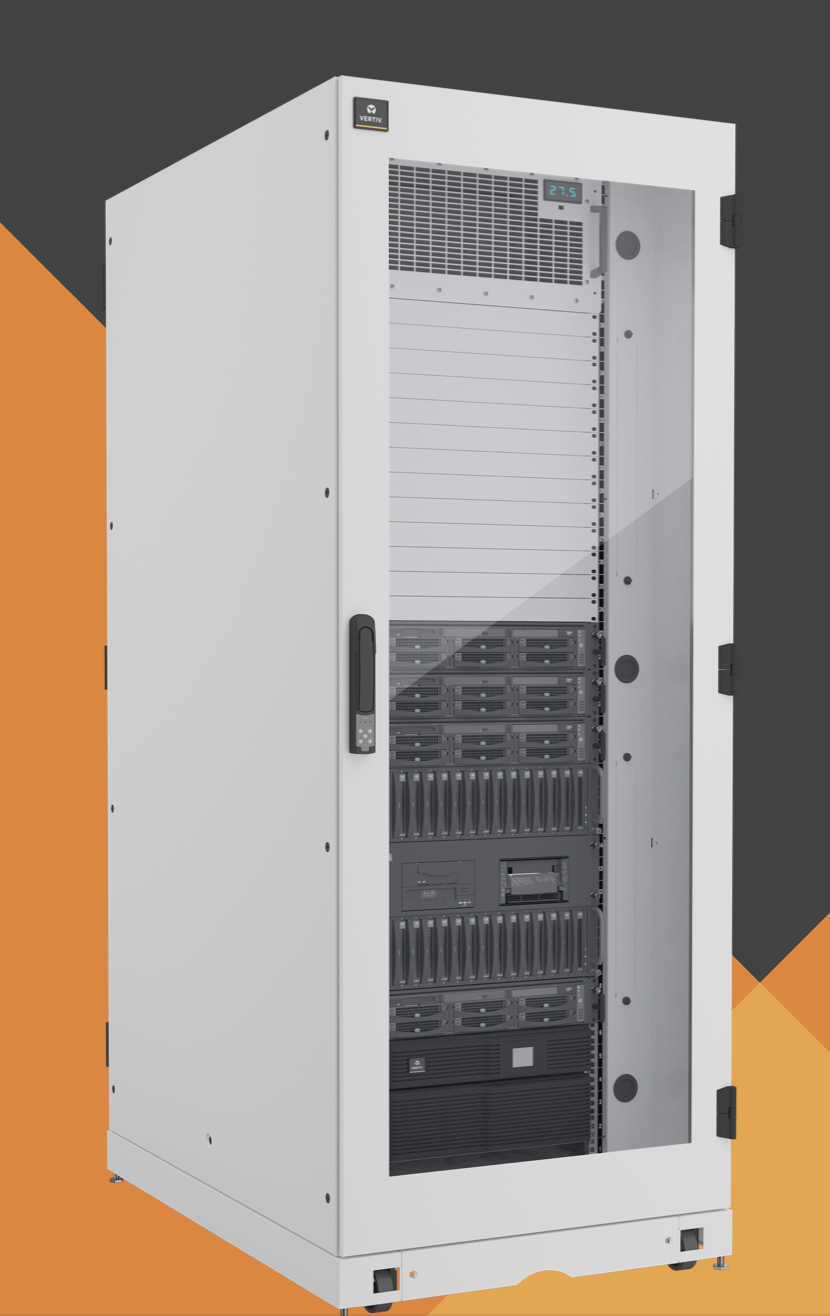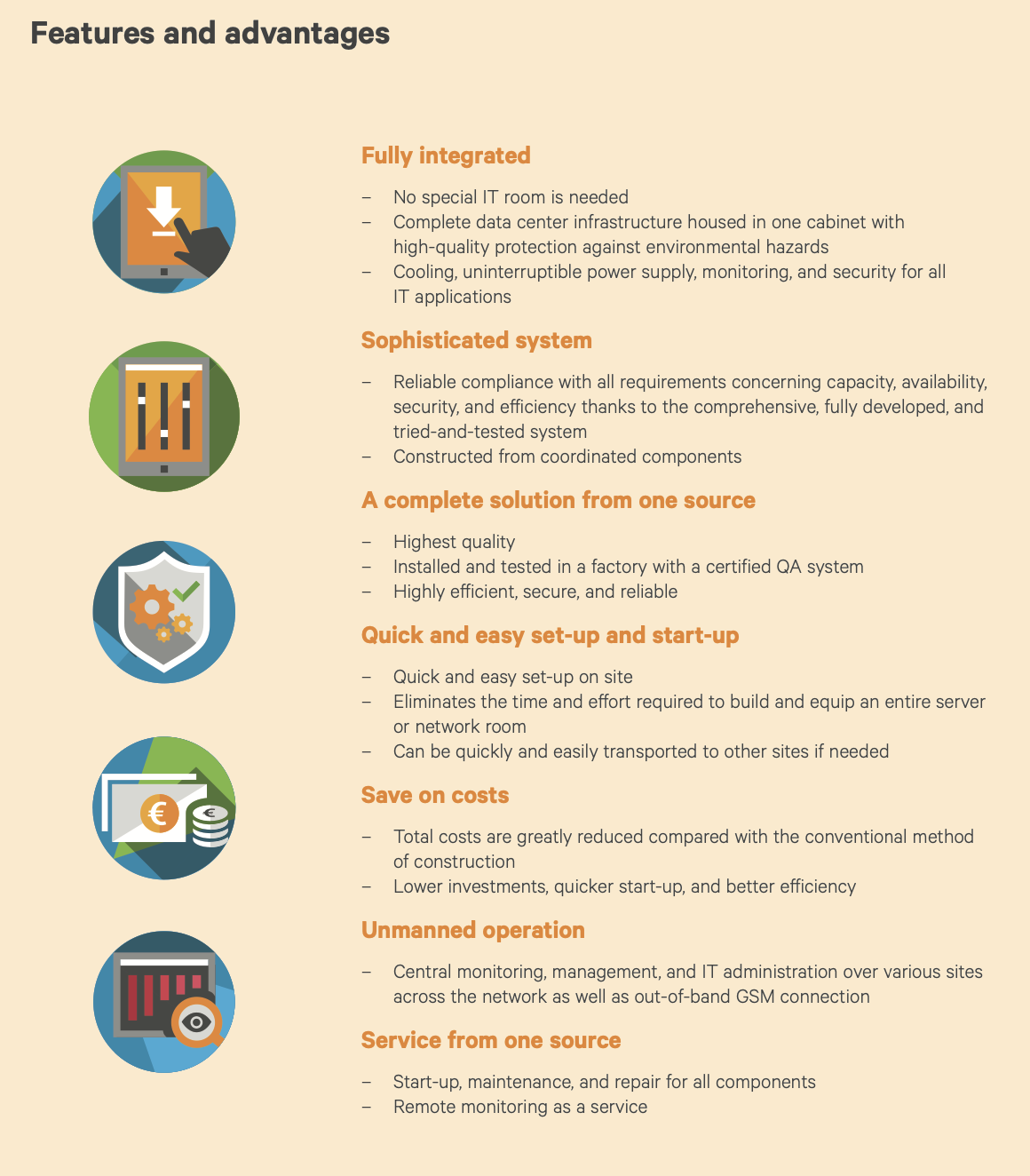IN ROOM, IN ROW AND IN RACK DATA CENTRE COOLING EXPLAINED
HIGH DENSITY IT EQUIPMENT HAS BROUGHT ABOUT MANY CHANGES TO WHAT COULD BE CONSIDERED THE MORE TRADITIONAL METHOD FOR COOLING DATA CENTRES AND SERVER ROOMS. HISTORICALLY A PERIMETER OR IN ROOM COOLING SYSTEM WAS PREFERRED FOR MOST MEDIUM TO LARGE DATA CENTRE ENVIRONMENTS.
Perimeter or In Room cooling designs use Computer Room Air Conditioners (CRAC) which are usually positioned around the perimeter of the room and use the raised floor void to deliver cold air around the data centre. The cold air is pushed around the room by the CRAC units under the floor and released or delivered through perforated floor tiles strategically located in the cold aisle.
This method does present some challenges, one of which is capacity. Perimeter In Room Data Centre Cooling was originally designed for IT loads of 2-5kw per rack, but with the latest high density IT equipment pushing power densities up as high as 20kw per server rack, Perimeter In Room Cooling usually cannot meet this demand.
There are other physical infrastructure issues such as ceiling height, room shape, rack layout and obstructions such as cabling above and under the floor which can obstruct air flow and make it difficult to predict performance. As power density increases and the data centre configuration changes it is possible that much of the cooling capacity may be wasted if the cool air is obstructed and never reaches an IT load that needs it. All of these factors prevent the highest levels of efficiency being achieved and in larger data centres that could result in thousands of pounds in excess utility costs every year.
In recent years there have been a number of developments in data centre cooling technology that help deliver cold air exactly where it is needed in the most efficient way possible. The idea is quite simple. By putting the cold air as close as possible to the equipment that demands it you can reduce the wasted capacity and the energy needed to deliver it.
In Row Data Centre Cooling has become one of the most popular methods for cooling small to large server rooms and data centres because of its ability to achieve the highest levels of efficiency. With In Row Data Centre Cooling, the CRAC units are situated amongst the IT racks and are dedicated to cooling a particular row – resulting in far shorter, more targeted airflow paths compared to Perimeter In Room Data Centre Cooling systems.
In addition, because there are usually no obstructions in the row airflows are much more predictable and all of the rated cooling capacity of the CRAC can be directed at IT loads.
The shorter airflow path also reduces the amount of power required to run the CRAC fans, increasing efficiency and lowering utility costs. Most In Row units will automatically vary the fan speed according to what cooling the IT load actually needs at that time, rather than run at full capacity even when the load does not demand it. Additional CRAC units can usually be added with ease to increase capacity or add redundancy as the data centre or server room expands and changes.
With In Rack Data Centre Cooling airflow paths are even shorter and more exact than In Row Cooling systems, and because the CRAC is located in the rack they are unaffected by infrastructure obstructions or room constraints. This means that all of the rated capacity of the CRAC can be utilised, enabling the highest power density to be achieved.
Much like In Row Data Centre Cooling architecture, In Rack Data Centre Cooling has the same benefits in terms of increased efficiency and highly targeted cooling and redundancy. The downside of this method is that it requires a large number of air conditioning devices and associated piping compared to the other architectures, particularly at lower power density so capital expenditure (capex) costs can be high.
Precise delivery of cooling capacity and the highest levels of efficiency make In Row and In Rack Data Centre Cooling the most popular architectures for modern data centre and server room design.


